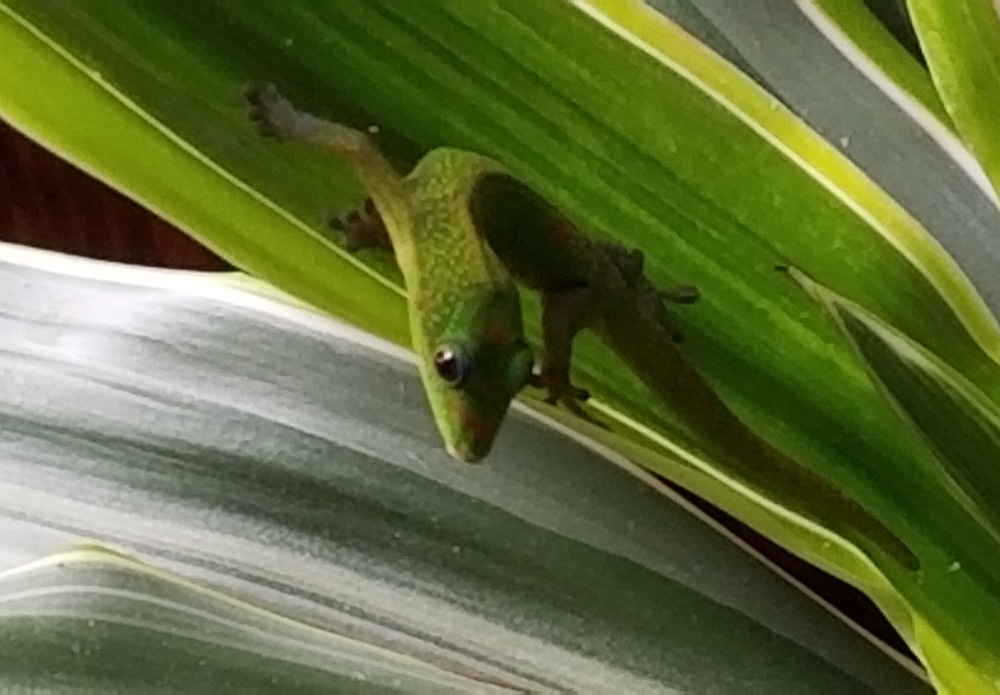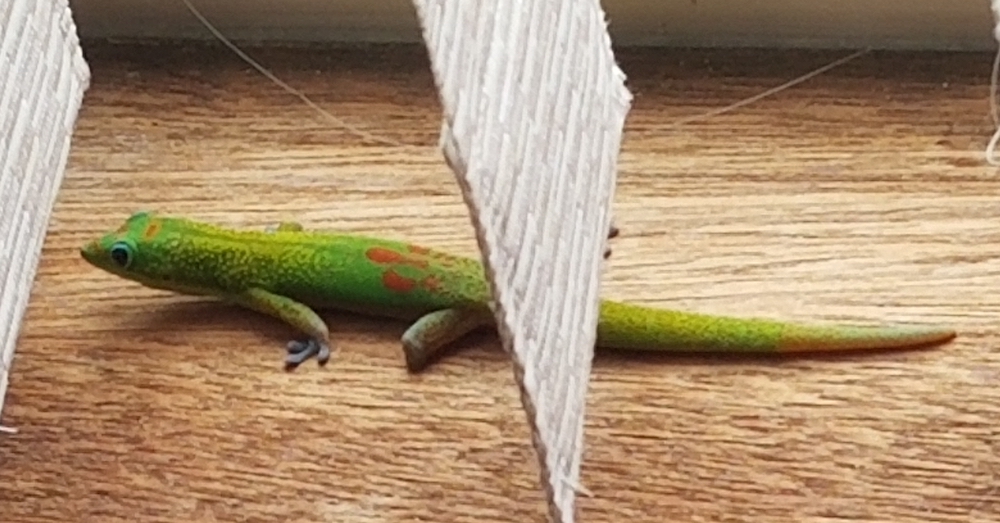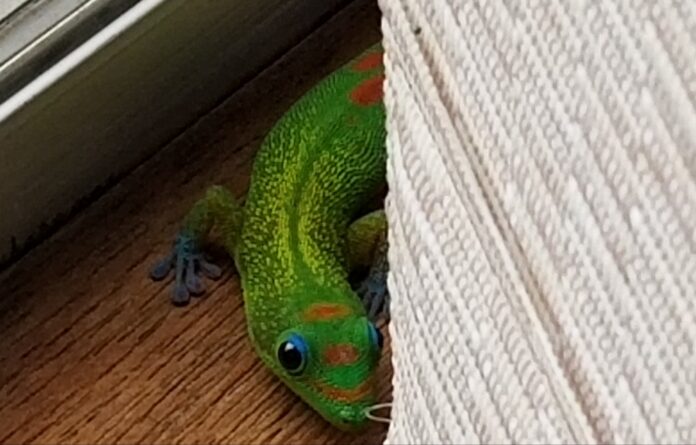A recent change of residence has forced me to look at a question most of us barely think about: Just how should humans interact with nature, with the living beings all around us?
I grew up in the southern California suburbs and spent nearly all of my adult life in urban areas—first Los Angeles, then San Francisco. But not quite a year and a half ago I transplanted myself to a rural area on the outskirts of Hilo, Hawaii. Things here are rather different.
Like most urban/suburban dwellers, for most of my life I had little interaction with animals other than as pets. Wild creatures were mostly something I saw briefly while on vacation or out hiking—deer, squirrels or bears in national parks, stingrays in tropical oceans while sightseeing, etc.—and generally from a distance. In SF I had the occasional rats that thought my vegetable garden was their salad bar, but that was about it.
Now, in this rural corner of Hawaii, I’m surrounded by untamed animals. Some are formerly domesticated critters gone feral—pigs and chickens, primarily—and at night I hear the oddly musical racket of the coqui frogs. But maybe the most interesting, because they are literally in my home, are the lizards.

Outside my dining room I occasionally see metallic skinks lurking in the bushes. And last summer a little colony of green anoles set up shop by my front porch. At times six or seven would hang out in the lattice woodwork by my front steps, and I could have sworn they were having a meeting. They rather suddenly packed up and left in January, and I miss them. Maybe they’ll return this summer.
The most permanent residents, and the ones I’m most fascinated by, are the geckos. They belong to a variety called gold dust day geckos, and you’ll probably recognize them: This species was the model for the animated talking gecko in those ubiquitous GEICO insurance ads.
Unlike my other reptilian neighbors, I see the geckos not just outside but inside my house nearly every day, coming and going as they please, They’re known to be fond of human structures, and because they’re small and quite capable of squeezing through tiny spaces, gecko-proofing one’s house would be nearly impossible and no doubt expensive (not that there’s any need to—they’re entirely harmless and eat bugs, so there’s no reason not to have them around.)
There’s one in particular who likes to hang out on my living room windowsill. He’s easy to recognize because he’s missing his left rear foot. I’ve named him Gordon, after the Michael Douglas character in the movie Wall Street, and I see him sunning himself on the windowsill around midday nearly every day. Yes, I literally live with lizard people.
Help us save local journalism!
Every tax-deductible donation helps us grow to cover the issues that mean the most to our community. Become a 48 Hills Hero and support the only daily progressive news source in the Bay Area.
Of course I know they’re not people, despite the constant temptation to anthropomorphize them. But we’re going to share living quarters for the foreseeable future, so we might as well get used to each other.
While I understand that Gordon and his fellow geckos will never be pets—and I wouldn’t want them to be—I can’t resist trying to at least assure him that he doesn’t need to be scared of me and run for cover when I approach. Since geckos like juicy, sweet fruit in addition to bugs, I occasionally bring him little morsels in hopes of convincing him that I’m friendly, or at least harmless. He’ll happily devour them—with a definite preference for papaya over other fruits, thank you very much—so long as I stay a couple feet away, but he still gets skittish if I get too close. Hey, if some creature 800 times your size came up to you, you’d probably get the hell away, too.
So the diplomacy is still a work in progress, but I’ll keep trying.
My comfort level with them is no doubt helped by their innate cuteness, largely a function of those big, round, puppy-dog eyes. They’re actually rather remarkable structures: Instead of eyelids that open and close, geckos have a sort of clear dome that’s fixed in place over the eye. If something gets on it and impedes their vision, they simply brush it away with their tongue.
Perhaps even more remarkable are their feet, which have microscopic structures on the bottom called setae, which create electromagnetic forces that stick them to whatever they’re climbing on. Every day I see them effortlessly crawling under my eaves, upside-down, as easily as you or I would walk across the floor. That electromagnetic force is strong enough that geckos can even stay pinned to a wall or ceiling while they sleep (and yes, I’ve actually seen this)—or even if they’re dead.
But even if they weren’t so endlessly interesting, they’re my roomies. How do I deal with this? How do we coexist?
The answer I finally came to is: I need to be a good neighbor, just as you would to any neighbor or roommate. Be considerate. Don’t be a jerk.
In practical terms, that means things like being careful when opening the blinds on that living room window, so as to not startle Gordon. It meant that when I had to have the house treated for termites, I sought out a firm that uses nontoxic products that won’t harm reptiles (and it worked—the geckos made themselves scarce while the treatment was going on, but were back the next day like nothing had happened.) It means being thoughtful about how my day-to-day actions could bring harm my little green friends, and doing what I can to avoid that.

And that, it seems to me, would be a good template for how humans deal with nature across the board. It would also mark a pretty radical change from how we do things now.
What might that look like? Well, for a start it would mean not using nature as our dumping ground. It would mean recognizing that there are communities of creatures on the land and in the water who feel the impacts of all the physical and chemical junk our civilization spews out, and finding ways to eliminate as much of that junk as possible, and to dispose of what can’t be eliminated in the least harmful way.
It can mean little things, like not using sunscreen products that harm ocean life when you go to the beach—or banning them entirely, as Hawaii has done. It should definitely include not spewing greenhouse gases into the air, sending our climate into unknown territory, and disrupting habitats all over the planet.
And it should absolutely include rethinking how and where we build. More infill and less sprawl into the urban-wildland interface would not only preserve the homes of millions of plants, animals, and birds, it would reduce the number of people at risk from catastrophic wildfires while helping build more walkable, transit-friendly communities that don’t depend so heavily on automobiles.
Maybe most of all, it means recognizing that up until now we’ve been pretty terrible neighbors, and everything from butterflies to whales have suffered for our greed and stupidity. It means thinking before we act—about whom we might hurt, whether they have two legs, four, six, or none at all. It means not being jerks to the beings who share this planet with us.
These all seem like good things for humanity, in addition to our wild relatives. Shouldn’t we give it a try?





